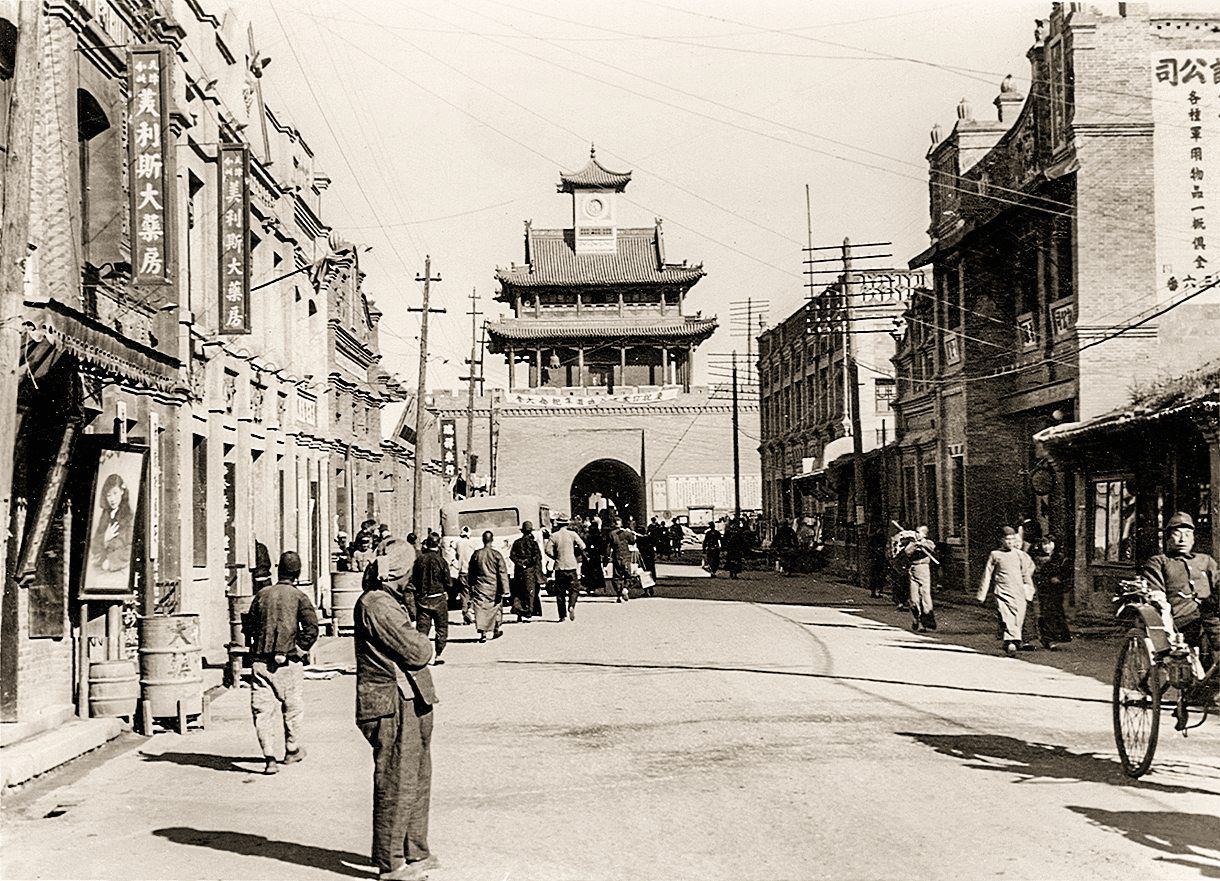
A street scene in the Chinese part of Khukho Khoto or Suiyuan, 1938
A street scene in the Chinese part of Khukho Khoto or Suiyuan. “Suiyuan (the New City) consists of several towns. The original town, called Khukho Khoto (the Blue City) by the Mongols, lies north of the present railway station, close to the mountains, through which the road leads up to Upper Mongolia; a little way south of the station begins the present city, which is sometimes called Kwei-hwa (or Khwei-hua cheng) but is also called after the district whose capital it is, Suiyuan. Finally, one kilometre east of Sui yuan, there is the new city, which is a rectangular fortress, surrounded by large walls. There the Manchus had a large garrison, and there their descendants still live; they speak Chinese, but many are conscious of their Man chu rian origins and several are said to be able to write and read Manchurian. This city consists of decayed properties, all in one storey, surrounded by clay walls, while Suiyuan proper is a real Chinese city with private resi dences along narrow lanes with nothing but gates out to the lane and with business streets, where shop follows shop in long rows” (Grønbech diary, 8 August 1938). Photo: Kaare Grønbech, 1938.